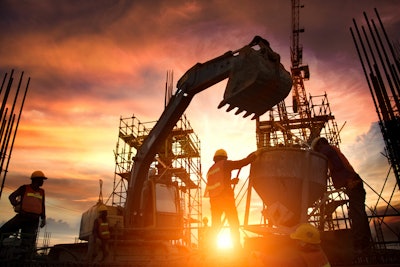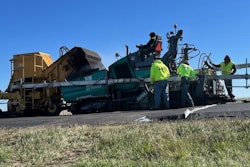
As the year that was 2022 wound down to a close, the Brookings Institute released one of their annual economic reports detailing some major findings and forecasts for the coming years in the infrastructure industry. Of course, that is a broad brush to paint with, but it is for that very reason that it pertains to what you do, the business you run, or the one that you are adjacent to. These forecasts detail some stark realities that businesses need to brace themselves for, and hopefully, take proactive measures to ensure the continued health of their businesses and the industry as a whole.
Brookings defines the seven infrastructure sectors as: Intra-Metro Transportation, Inter-Metro Transportation, Trade and Logistics, Energy, Water, Telecom, and Public Works. Every one of these fields were a part of the research conducted for their study, and the results are presented together as industry wide data. As is usually the case, there is some good news and some not so good news. There are some things working in the industries favor and some challenges:
The Challenges
1. Over the next decade, analysts project 1.7 million infrastructure workers (12.2%) will leave their jobs EACH YEAR on average, leading to even greater job replacement needs.
The needs for able-bodied, skilled workers has been well documented over the last 12-18 months already. However, if the data is correct, this struggle is only about to get a lot worse. The federal Bureau of Labor Statistics showed that these job separations will largely be due to things like retirements, with some transfers to other sectors and occupations in the economy also being a factor.
The current focus on career outreach, broader hiring demographics, and strengthening retention will not only need to continue, but grow into fully fledged systems to find, funnel, and train new recruits for infrastructure sector jobs. This "silver tsunami", as some are calling it, is the kind of wave that companies need to be ahead of, or risk being crushed behind it. Now is the time to invest in these new paradigms and strategies.
2. The current workforce demographic makeup skews older (45 years of age and up) and white, while the emerging workforce is much more diverse.
This is an issue that I wrote about last month in an article about job site safety issues and discrimination. In a broader sense, however, this forecasts a need for ever changing and evolving workplace recruitment and systemic policies. What does that mean? In the most basic sense, it means that the ways that things got done in the past, will not suffice in the coming reality.
If employers rely on the current demographic makeup, running business as usual, there simply wont be enough candidates for the jobs they will need to fill. It's a losing game, and the numbers don't lie. Only 11% of current infrastructure workers are under the age of 24, and women only make up 18.5% of workers, whereas they account for 49.6% of all workers nationally. The good news is that we can do something about it, and some employers already are.
At the 2022 IGNITE Construction Summit in December, during an open panel discussion on hiring practices, a long time veteran of the industry sharing stories about the success he's had recruiting young people, especially young women, from school based programs. He praised the next generation's potential, he said, "They aren't lazy, they respond to what you invest in them."
What Works In Our Favor
3. Infrastructure jobs pay about 30% higher wages for workers at lower income levels, supporting more equitable career paths.
According to the Brookings research study, "Infrastructure jobs pay $31,750 and $39,270 at the 10th and 25th percentile, respectively, compared to $23,980 and $29,950 for all occupations at these percentiles."
This translates into better pay opportunities for first time employees in the infrastructure job market, as well as for those who are transitioning into new positions in their career. Lots of people have experienced the way that construction jobs offer some levels of potential job growth by climbing the "ladder" on the job site. This can sometimes mean working your way into operations or management positions.
This is an attractive feature to the infrastructure sector, and something that should be utilized in the recruitment process.
4. The infrastructure sector accounts for almost 12% of all national employment.
The seven fields that make up the Brooking's research, concentrate approximately 95 different types of occupations. These tend to focus more on operations, but that, again, only speaks to the industry's many branching career paths and opportunities. However, the largest of these occupations are electricians, plumbers, civil engineers, and other skilled trades positions. And of those--the transportation and energy fields make up the greatest percentage of jobs.
A Little Bit of Both
5. Most Infrastructure workers (53.8%) only have a high school diploma or less, while achieving higher wages and growth than in other industries, due to on the job training.
This one, on the surface, appears to be a straight home run for the infrastructure industry, but the devil is in the details. When you look closer at the research, the blade cuts a little bit in both directions. Firstly, this figure contrasts with other industry sectors where only 32% have a high school diploma or less, meaning that they generally require a higher level of education for entry into those fields.
However, infrastructure jobs require some level of on-the-job training approximately 87% of the time. That's a no brainer, right? Most people who show up to the job site, don't know how to work the machines on a basic level yet, much less, be able to competently use them for the job needed, yet.
Other sectors across the nation, however, comparatively only required on the job training approximately 63% of the time--more than 20% less.
One way to contextualize this information is to see that new-hires into the infrastructure industry might face a significant amount of barriers in the early phases of their career. This is the most crucial time, also, when it comes to gauging retention. This highlights a needed focus on collaborative approaches amongst the educators and employers.




















